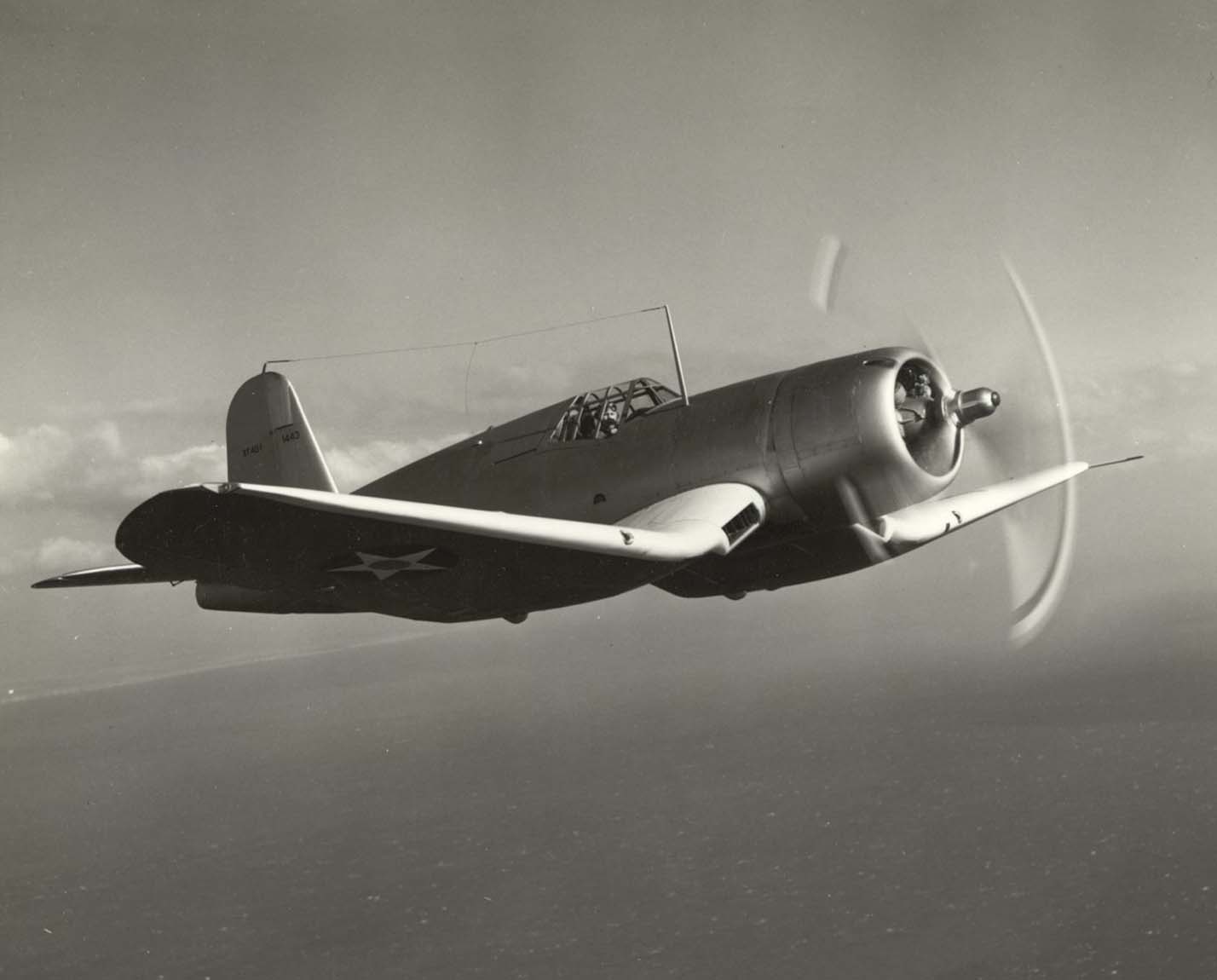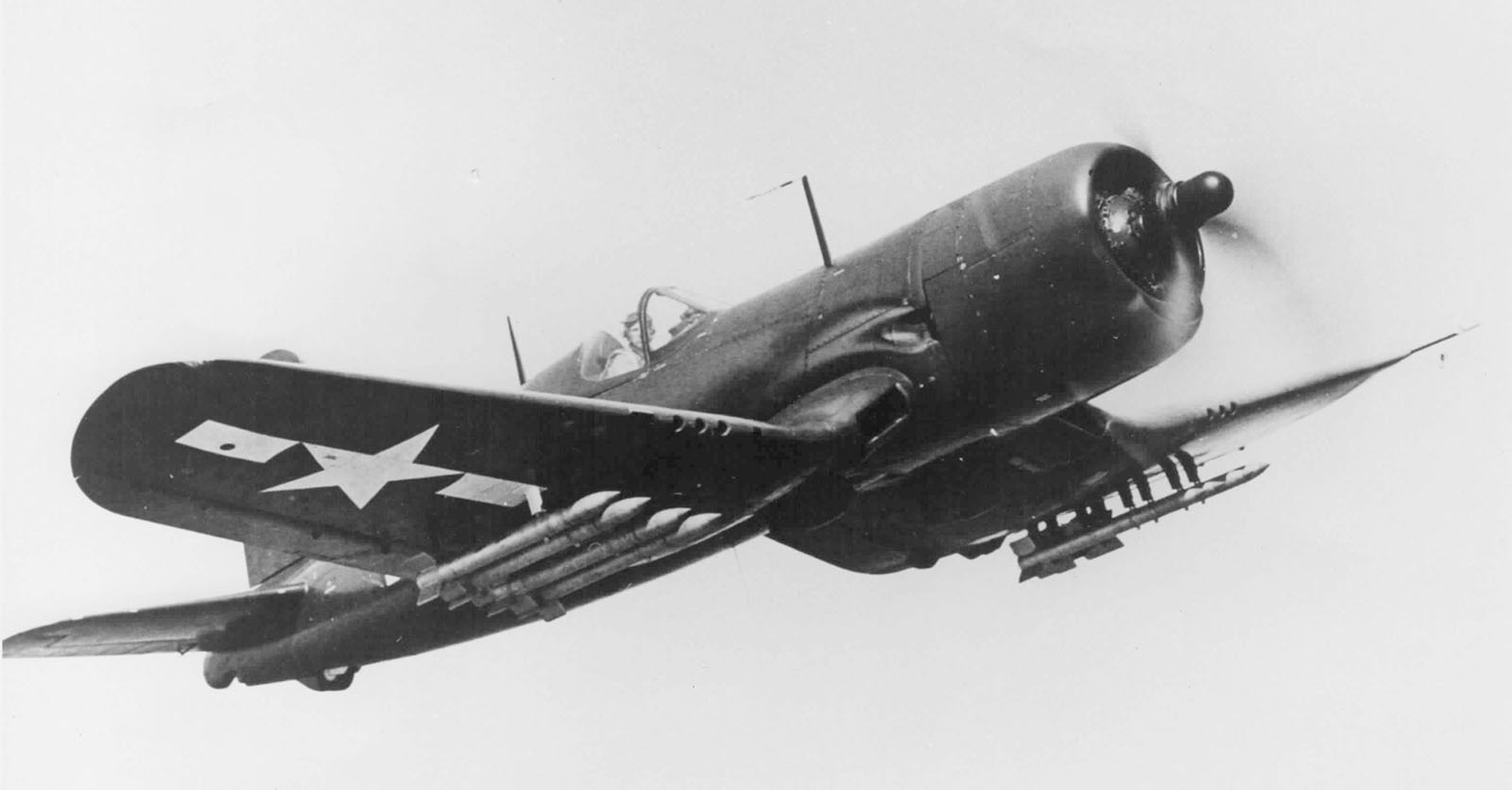Sikorsky Product History
Vought-Sikorsky F4U Corsair
Background
The Lewis & Vought Corporation was founded in 1917 by the students of the Wright brothers, Chance Milton Vought and by Birdsey B. Lewis. Since 1920, the company specialized only in military aircraft. In 1929, the company joined United Aircraft Corporation, and was eventually renamed Chance Vought. In 1939, Chance Vought united with Sikorsky Aircraft Corporation to form Vought-Sikorsky. January 1943 Vought-Sikorsky split into its two original components. Vought remaining in the Stratford plant to concentrate on military airplanes and Sikorsky moved to a plant in Bridgeport to continue helicopter development and production.

Historical Notes
The F4U was conceived to use the most powerful engine and largest propeller a fighter plane ever had; these long propeller blades caused ground clearance problems. The “W” shaped-wings helped reducing the required length of the landing gear, and provided quite good visibility to the sides… But the landing gear was still long and therefore fragile, and the first reports of carrier tests were: “This plane will never be a good carrier plane”. The Corsair was nicknamed “Ensign Eliminator”; the strong engine torque didn’t make it an easy plane to land.
Design Description
F4U was a single-engine aircraft. The fuselage was round with a small bubble canopy and a tall rounded fin. Fuselage extended past the fin. A radial air-cooled engine was mounted in the nose and was fitted with a four-blade propeller. Low-set wings were inversed-gullwing shaped. They were elliptical with rounded tips. An oval air intake was housed in the leading edge of either wing close to the fuselage. Machine guns were mounted in the wings. Tailplane was parabolla-shaped and was set past the tail fin. Landing gear with tail wheel and a hook was retractable. F4U was developed in 1938 for US Marine Corps. First prototype XF4U-1 flew on May 29, 1940. The airplane went in production in 1942. Main modifications were: F4U-1 – first production version; F4U-1A – improved F4U-1; F4U-1B – exported to United Kingdom in 1943; F4U-1C – close air support version armed with guns rather than machine guns; F4U-1D – fighter/bomber; F4U-2 – night fighter, a radar was housed in a fairing on the left wing; XF4U-3 – experimental high-altitude fighter with twin turbochargers; F4U-4 – fitted with more powerful engine, could carry rockets; F4U-5 – night fighter with Pratt & Whitney R-2800 engine. By 1952, 12681 airplane was built. Many F4U were used in Korea.

Production History
The F4U was produced by multiple manufacturers, including Vought-Sikorsky, Brewster and Goodyear
The first flight of prototype XF4U aircraft was on May 29, 1940.
General Characteristics and Performance
| Performance – Standard Day at Sea Level | |
|---|---|
| Maximum Speed | 395 mph / 343 kts / 635 km/hr |
| Service Ceiling | 37,000 ft / 11,280 m |
| Powerplant Ratings Standard Day at Sea Level | |
|---|---|
| Pratt & Whitney R-2800 Double Wasp, 18 cylinders | 2,200 hp / 1,640.5 kw |
| Weights | |
|---|---|
| Weight Empty | 9,040 lbs / 4,100 kg |
| Weight with Full Load | 14,100 lb / 6,400 kg |
| Armament | Quantity | |
|---|---|---|
| 12.7 mm (.50cal) wing-mounted machine guns | 6 |
